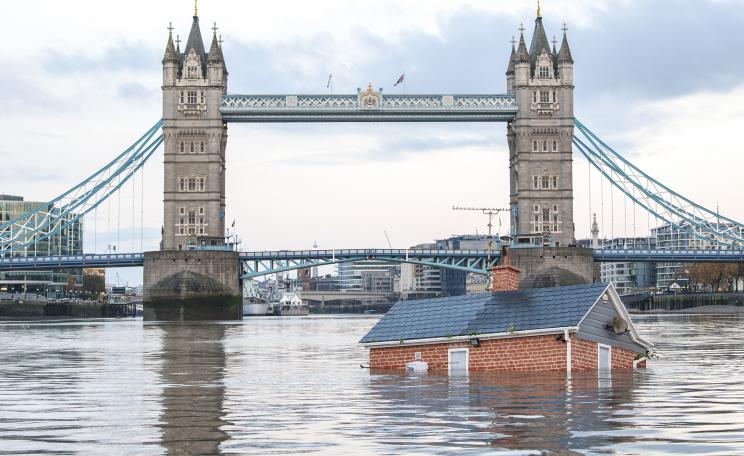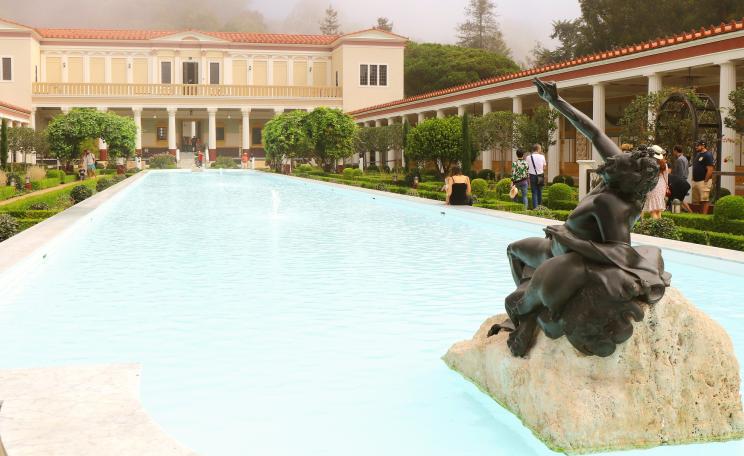Each flood-prone community faces its own unique problems, based on the topography of the local landscape and how the water reacts with it, and will therefore require different solutions.
The old mill town of Hebden Bridge sits at the bottom of the Calder Valley in what is known to experts as a 'rapid response catchment' – a place where heavy rainfall brings flash flooding with little warning.
Roads turn to rivers on the steep slopes and the river Calder, the valley’s namesake, bursts its banks and blocks the town from outside assistance. The rushing waters clear as suddenly as they appear, but not before causing tens or hundreds of thousands of pounds worth of damage.
Businesses get caught out as most of their workers live outside the town. If the rain comes after opening hours, the roads are blocked before they hear the warning.
Hotspot
That is why Andrew Entwhistle, one of 15 flood wardens in Hebden Bridge, roams the town to encourage residents and business owners to take preparatory, defensive action, especially before a large storm.
I met him in the town square on a quiet Sunday in early March, and he told me: “During the storm we look for trigger points, such as the height of the river or the rate of waterflow, or the amount of rain coming down. We watch hotspots and get intervention there if it’s needed.”
A hotspot could be a point in the riverbank that is liable to break. Before it does so, Andrew sends out a text message to a bank of volunteers who come and divert the water using large rubber bricks made from recycled tyres and by doing this they keep roads open which can be used to transport more volunteers and equipment to other hotspots.
A 76-year-old retired fireman, Andrew has lived in Hebden Bridge his whole life. He knows the town and its people and uses that local knowledge to identify these trigger points and hotspots, giving the volunteers precious minutes in which to act.
Each flood-prone community faces its own unique problems, based on the topography of the local landscape and how the water reacts with it, and will therefore require different solutions.
Sometimes he will receive a call at 1am from a worried resident telling him there is a lot of water behind their house. “Most of the time it’s just a puddle,” said Andrew. “But you have to go because sometimes they’ll be right.”
Support
Anxiety is high. Rain puts everybody on edge. Andrew has stopped wearing his flood warden jacket when he is monitoring water levels because people think flooding is imminent and panic. And they have reason to worry.
The Calder Valley is the most flood-prone region in the country. There are less than 10,000 properties in the borough of Calderdale, but of all the flooded homes in England, over a third of those are here, as are half of all flooded businesses. Once-in-a-generation floods now happen multiple times a year.
No season is safe. The most severe flood in living memory came in the early hours of Boxing Day 2015. While many people were sleeping with bellies full of turkey and red wine, Andrew was wading chest deep in filthy water rescuing dogs and people’s belongings.
Other groups are working hard behind the lines to give additional support. Slow The Flow works with the National Trust to stop the rainwater rushing down the slopes all at once. They do this by building leaky dams across a vast network of streams that feed into Hebden Beck, a river north of the town.
It has built more than 500 of these dams over the last four years and they are barely noticeable, as they are made entirely of natural materials. The woodland there is a monoculture of beech trees, which the National Trust is working to change by felling 10 percent of them, to be replaced by oak, birch, rowan, hawthorne and blackthorne.
Replacing the beech in this way improves the biodiversity of the woodland and also helps to slow the flow of water by creating space for undergrowth, which absorbs water as it passes.
Scale
Bede Mullen, a retired engineer and chair of Slow The Flow, said: “The dams hold the water back and spread it onto the bankside. There’s about a 45 minute difference between controlled and uncontrolled streams, which has a huge impact on reducing the peak flow.”
Given the scale of the project, it is difficult to quantify its total effect, but Andrew said that since they started, Hebden Beck has not overflown.
It is not only rainwater that causes problems. Snowmelt runs off the moorland bringing gravel and dirt and animal manure which contaminates the bodies of people and their pets as they wade and swim through the water in their efforts to escape. When the water recedes it leaves the roads buried in filth.
After the Boxing Day floods, a local detachment of soldiers took it upon themselves to go door-to-door asking how they could be of help and cleaning the grimy mud off the streets which prevented people from having to walk it into their homes. Andrew said: “That made a big psychological difference. It’s not just the money, it’s coming in and seeing the place devastated.”
Each flood-prone community faces its own unique problems, based on the topography of the local landscape and how the water reacts with it, and will therefore require different solutions.
For example, in Hebden Bridge, boats would be of no use, as the water drains quickly. But wading 4x4s would allow people to traverse the floodwater without risk of contamination or injury. Andrew also suggested the idea of establishing a national civil defence of the type that was formed during the cold war in case of a nuclear attack.
Intensity
As the frequency and intensity of rainstorms increases with the Earth’s temperature, more towns are finding themselves engulfed in the same relentless cycle as Hebden Bridge.
According to the National Flood Forum, there are more than 300 flood action groups across the country, formed by local communities after being hit by severe flooding. They are facing a new reality and are adapting to it.
For Andrew, being a flood warden was never something he envisaged, but as a retired fireman, helping people is something he has always done. And he has become popular for it. At a cafe where we had coffee, the owner told him: “Everyday you achieve something. Thank you.”
This Author
Danny Halpin is a reporter for Extinction Rebellion’s Rebel Radio and is studying for his MA in journalism at Birkbeck, University of London. He is a regular contributor for TruePublica and his work has featured in the Journal of Popular Music Education, Lippy Magazine and his website.







